How to Select a Propeller for Your Boat
Selecting the right boat propeller is an important factor in maximizing your boat's performance. Determining the correct size and style of boat prop will keep the engine operating within its recommended RPM range and allow it to apply its maximum horsepower to the water. One of our goals at Overton's is to help make choosing a boat propeller an easy process. We have a huge selection of props and prop accessories at great prices! Optimize your performance with the right propeller using the information below or take advantage of our propeller selector tool for help in choosing your prop.
MATERIAL - We offer propellers made of composite, aluminum, and stainless steel. Composite props offer good performance, are durable, and inexpensive. They also offer some protection for your lower unit during a prop strike. Aluminum props are the most common and are suitable for the widest range of applications since there are so many models and styles available. Stainless steel props offer the highest performance and best durability.
SIZE - Propeller size refers to diameter and pitch. Diameter is twice the distance from the center of the hub to the tip of the blade. Generally, smaller diameter props correspond with smaller engines and boats, while larger diameter props correspond with larger boats. Pitch is the forward movement of a propeller through one complete revolution measured in inches. Lowering prop pitch will increase acceleration and pulling power. A higher pitch prop will make a boat go faster as long as the engine has enough power to keep the RPMs in the optimum range. If the engine doesn't produce enough power to run a higher pitch prop, performance suffers and engine damage can result.
Select the prop size that lets your engine operate at WOT in the correct RPM range.
NUMBER OF BLADES - When the number of blades are changed, diameter and pitch may require adjusting to keep the RPMs in the proper range. For most purposes, 3 and 4-blade boat propellers can be used interchangeably on outboards and sterndrives without much of a change in performance.
CUPPED PROPELLERS - Special curved trailing edges enable the prop to maintain performance at higher trim levels and in tight corners. Cupped boat props allow most boats to achieve a higher top-end speed or at least the same speed at a lower engine RPM. They also promote more efficient fuel consumption.
WOT (WIDE OPEN THROTTLE) RPM RANGE - When selecting a prop for your boat, the goal is to choose one that allows the engine to reach its optimal WOT. This is generally between 5000 and 5500 RPM for outboards, 4400 to 4800 for sterndrives, depending on engine type. This information is typically included in the owner's manual of a new boat or engine.
If your current prop's performance is acceptable (WOT is within manufacturer's guidelines) choose a replacement prop that is very similar to the diameter and pitch of your current prop. Consider upgrading to a different material such as stainless steel or trying a 4-blade prop instead of a 3-blade.
If you regularly run your boat at different altitudes, you know the importance of using boat props with a different pitch to match your engine performance. Having two props pitched 2" apart lets you optimize the power of your engine.
What if your engine operates at the wrong RPM at WOT? Pitch and RPM have an inverse relationship; increasing pitch reduces RPM and reducing pitch increases RPM. A 1" change in pitch will usually result in a 200 RPM change in engine speed. Therefore, if your engine operates below the optimum proper RPM, you should consider a prop with less pitch. If your engine over-revs, increase the pitch.
Modular propellers are becoming increasingly popular. Many engine manufacturers are now selling modular boat props as original equipment. Our current offering of modular props include Michigan Wheel XHS in both Vortex Aluminum and Apollo Stainless Steel. When ordering a modular prop, order both a hub kit and prop housing.
You might also consider changing the propeller size to affect a specific performance attribute. A lower-pitch power prop makes it easier to pop skiers out of the water. Tournament bass boats may need more top end speed and should use a prop with a higher pitch. Houseboats and cruisers care more about efficiency at displacement speeds, therefore they require a lower pitch to acheive low-end power and the largest diameter their lower unit can handle.
Always have an extra propeller on board with tools to change it! If you have a prop strike or spin out a hub, you will only be delayed a few minutes preventing you from missing any fun on the water.
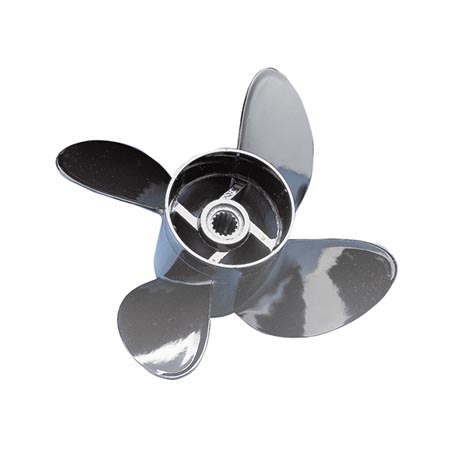
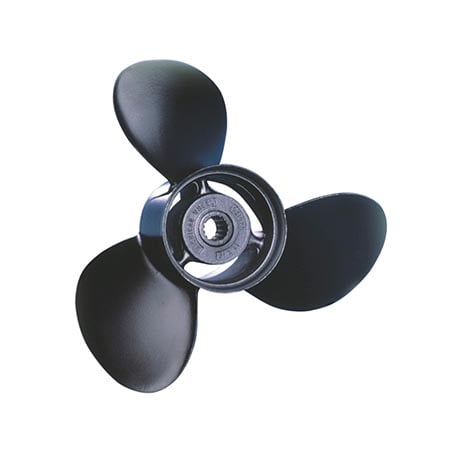
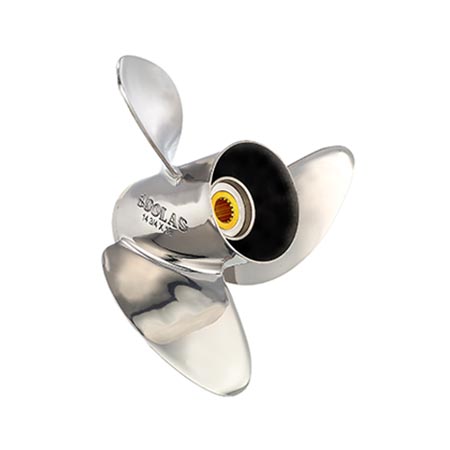
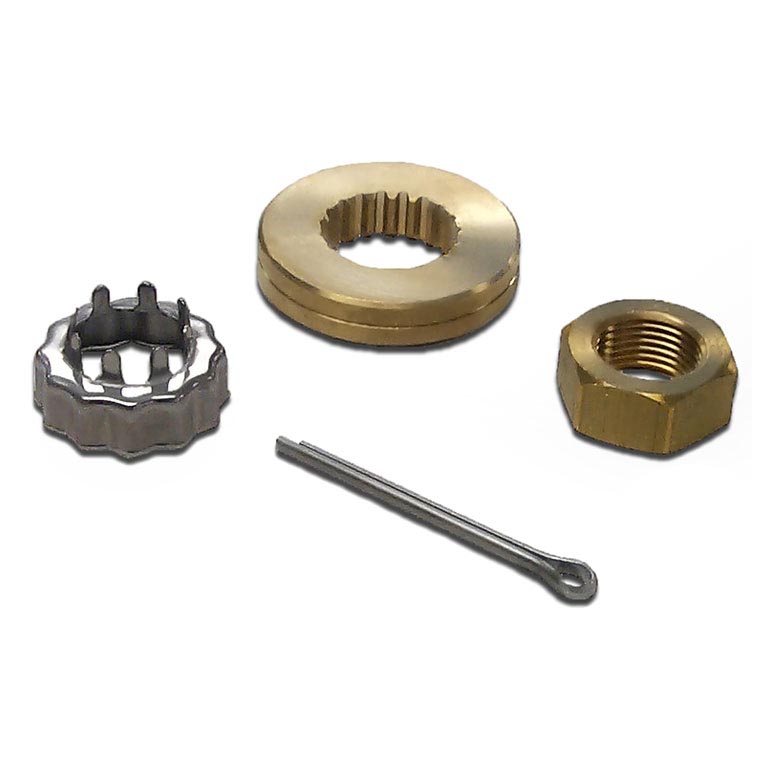
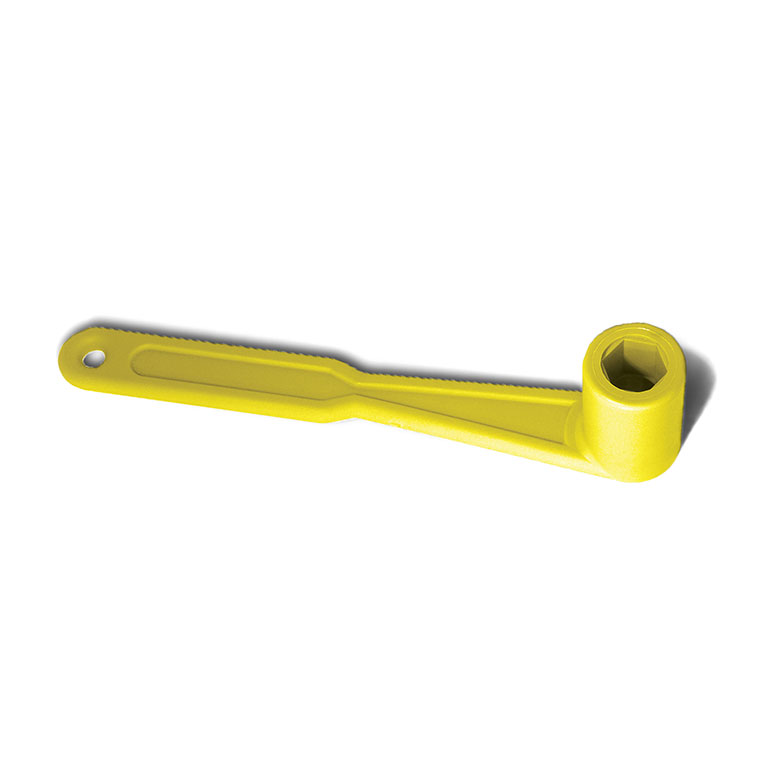
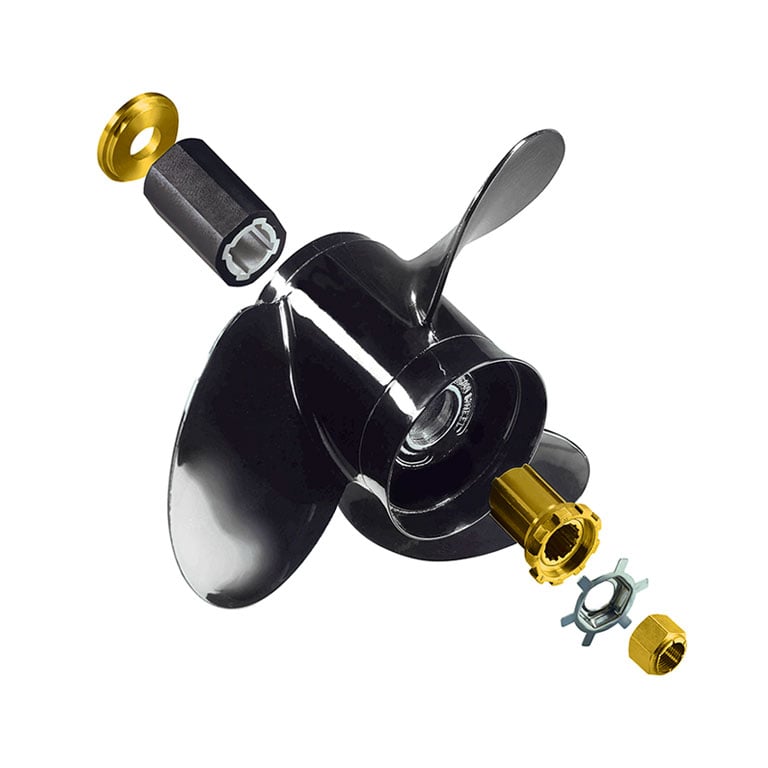
 800-700-1366
800-700-1366
